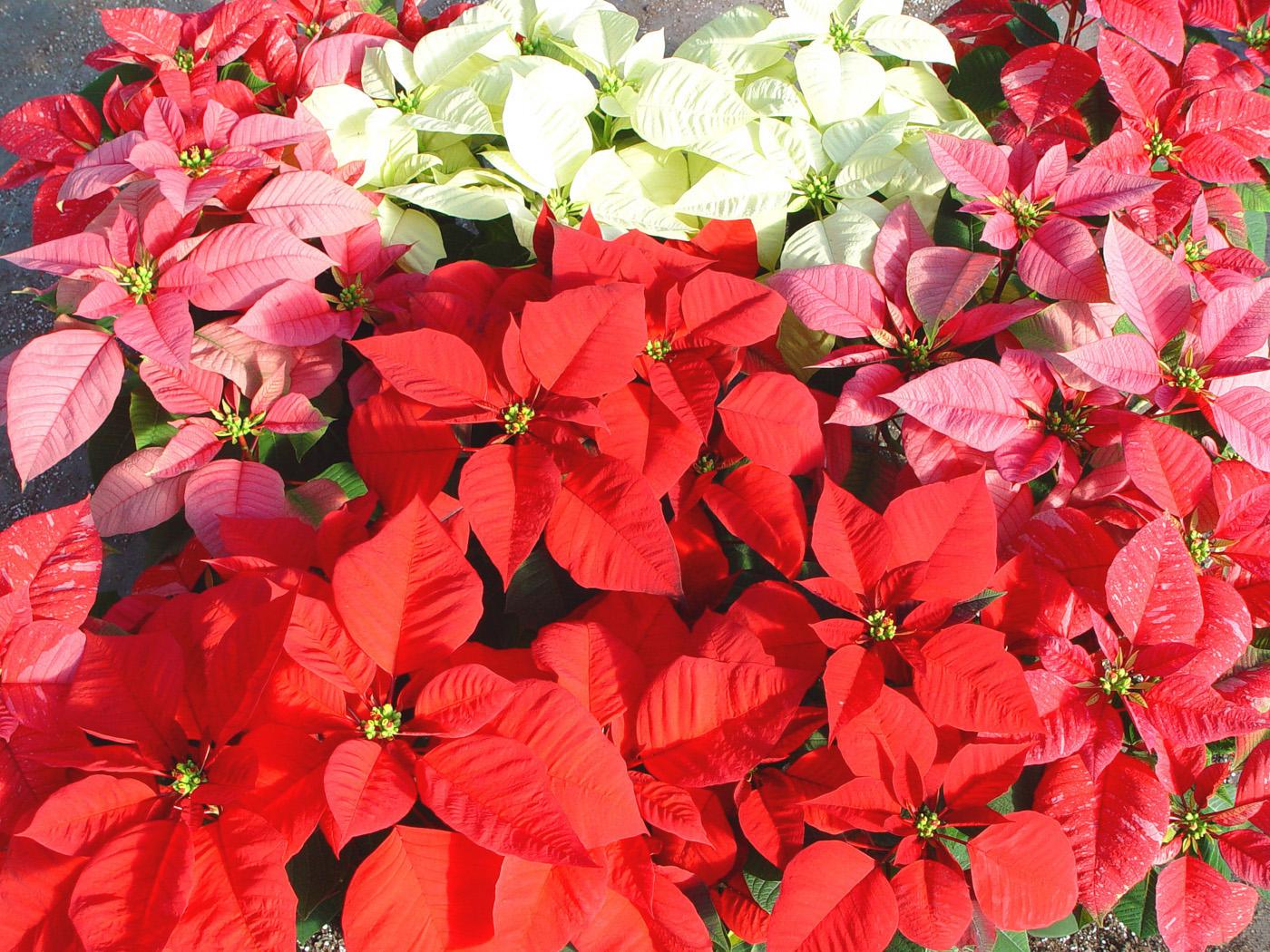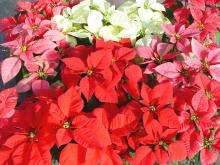Information Possibly Outdated
The information presented on this page was originally released on November 3, 2005. It may not be outdated, but please search our site for more current information. If you plan to quote or reference this information in a publication, please check with the Extension specialist or author before proceeding.
Poinsettias offer holiday cheer in Katrina's wake
MISSISSIPPI STATE -- Hurricane Katrina damaged portions of the state's poinsettia crop, but plants remain available from Mississippi growers.
Kerry Johnson, area horticulturist with Mississippi State University's Extension Service in George County, said Katrina may have destroyed 25 percent or more of the area's poinsettia crop. Some producers had total losses from storm damage and the subsequent power outage.
“Quality poinsettias remain in adequate numbers to meet market demands. While growers lost markets in New Orleans and along the Gulf Coast, poinsettias should be readily available for other consumers wanting holiday plants,” Johnson said.
Lori Hitchcock, co-owner of Natchez Trace Greenhouses in Kosciusko, said she is anticipating a bigger demand for plants this year.
“We expanded a little this year because we didn't have enough last year,” Hitchcock said. “White poinsettias are becoming more popular, so we increased by about 2,000 of those varieties.”
Hitchcock seeks to grow higher quality plants that will remain healthy for a longer period.
“To grow quality poinsettias, plants need adequate heat in the winter, adequate fertilizer, adequate spacing and to be pinched properly,” she said. “With lower quality poinsettias, producers don't spend as much time or money. You can tell by looking at the plants. They will be fragile and are shorter plants with smaller bracts.”
Hitchcock said spacing is one of the most important factors in producing the best poinsettias. The cost of heating impacts spacing decisions, and the increasing cost of heating has prevented many growers from staying in the business. Natchez Trace Greenhouses is one of the few greenhouses in the South using a heating system of wood and corn instead of natural gas. Hitchcock said she is hoping to save 70 percent on heating costs this year.
“When someone is trying to grow more plants in the greenhouse to utilize the heating, they will have more plants, but the quality will not be as good,” she said. “Each year, heating costs are going up, especially this year. It's hard to carry over the cost of production to the price of the plant because if the prices get too high, people won't buy them.”
Hitchcock said the best way to have a poinsettia that thrives throughout the holiday season is to purchase one that looks healthy and then to provide proper care.
Norman Winter, Extension horticulturist, said keeping poinsettias in conditions similar to greenhouses will help prolong their appearance. Greenhouse conditions include daytime temperatures of 70 to 72 degrees and night time temperatures of 60 degrees. Use care when transporting them in cold, windy conditions.
“Whenever possible, place poinsettias in the sunniest spot available, such as a window that faces south, east or west,” Winter said. “Avoid contact with cold windowpanes.”
The two most common problems in poinsettia care center on watering, either too little or too much. Check the soil every day to make sure it is not too dry. Provide enough water that it flows freely out the bottom holes, but let it finish draining before returning the plant to its decorative holder. Roots will suffocate if left standing in water.
“Poinsettias come in a wide variety of colors, including red, white, pink and maroon, as well as speckled and marbled appearances,” Winter said. “The tree form poinsettias have increase in popularity in recent years. They also come in many colors.”






